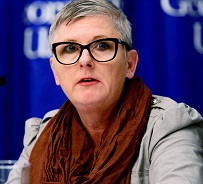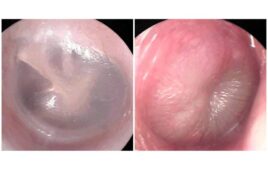 By Jackie Hutter, founder, The Hutter Group
By Jackie Hutter, founder, The Hutter Group
IP strategists spend considerable time “Monday Morning Quarterbacking” patent strategy for medical device inventions for the purposes of valuation and commercialization. We are often asked to review medical device patents to provide opinions on commercial potential. For some of these reviews, we are forced to conclude that the medical device patent fails to create a scope of protection to justify the investment.
Let’s start with an example: A medical device investor recently had me conduct a preliminary review of a patent for a device invented by a medical specialist – let’s say she’s an ENT who is a recognized expert on sinus surgery. Like many experienced practitioners, the doctor was frustrated with the tools available and, after many surgeries she experienced a key insight about improving a particularly tricky aspect of treating a condition of the sinuses. This “ah ha” moment made her realize that patient outcomes could be significantly improved if the design of an instrument was tweaked to allow better contact with a part of the sinus cavity that was hard to reach in a significant subset of patients. She saw herself as licensing her patented invention to an instrument company to augment the increasingly uncertain revenue stream in her medical practice. With these outcomes in mind, our ENT sought referrals from her friends and colleagues for a good patent attorney. She selected someone with a stellar reputation, and an hourly fee that matched that reputation.
The patent attorney drafted a very strong patent application that broadly covered the instrument that our ENT envisioned as the appropriate implementation of her surgical insight. However, the pre-filing search encompassed only ENT-related prior art, which is not surprising given the vertical nature of most medical practices. Because of this limited search, a highly relevant piece of prior art in an adjacent area – let’s say the gynecological instrumentation space – was ignored. The patent examiner for the ENT’s patent application later cited the gynecology instrument. The prior art required a narrowing amendment that substantially limited the claim scope. The patent was allowed after this amendment and, after spending $25,000, the ENT now had a patent covering the instrument design resulting from her original surgical insight.
Knowing that she could not commercialize her patented invention and still maintain her medical practice, our ENT contacted a medical device investor who brought me in to review the patent. Although the patent itself was of high quality, the business opportunity was not promising due to the limited scope of the patent claims. As such, I recommended that the investor pass on working with the ENT.
Focus on function
How can a high-quality patent result in a low-quality commercialization opportunity? It’s pretty easy, actually – the problem is not with the patent, but with the patent strategy.
In this case, the instrument design claimed in the patent addressed only one of several ways that the sinus cavity access problem could be solved. The narrowing amendment further limited the value of the patent because competitors can freely use the feature deleted from the claims. The decisions made in application drafting and prosecution limited the value of the patent for commercialization.
Without my conclusion, the investor would have put the time and money needed to drive this medical device into the marketplace, and the limited scope of the patent would leave ample opportunity for others to provide the same functionality without infringing the ENT’s patent. The benefits provided by the instrument in sinus surgery would be left for others to copy once the investment was made to validate the importance of the ENT’s innovation. It therefore made little sense for the investor to move forward.
This scenario illustrates two common failures in patent strategy. Patents can fail when they focus specifically on implementation rather than functionality. They can also fail when there is a lack of consideration for developments in other surgical areas.
In this example, it is worth noting that the patent attorney did nothing wrong. He did exactly what he was paid to do, which was to competently draft and prosecute a patent application claiming our ENT’s invention. It was not his job to create market value from the filing, but rather to communicate using legal language the scope of the invention sought to be owned to the Patent Office. If the inventor does not understand how the fundamental insight will create value in the market, the patent attorney will not be able to generate patent coverage that will allow them to capture that value in the marketplace.
The upshot is that more innovators, and medical device patent attorneys, need to understand the value of IP strategy as a value creation mechanism. The key to finding that IP value is to focus on the functionality of the innovation, not the implementation.
One way to discover this functionality is to conduct competitive patent and market analysis. These tools give context to determine how to characterize insight and better align innovation with its potential value in the market. Then, and only then, should the patent attorney come into the picture. Such a process, of course, means extra work and expense for on the front end. However, given the alternative of an expensive patent with no real commercial potential, it does not make sense to do it any other way.
Jackie Hutter, MS, JD, has been recognized by her peers as a Top Global IP Strategist for the last 8 years. She brings over 20 years of IP and business experience to companies and entrepreneurs who seek to maximize the value of their innovations by obtaining meaningful IP protection. Hutter shares her perspectives on IP at IPAssetMaximizerBlog.com and consults for a wide variety of global innovators from Atlanta, Ga. She can be contacted at JackieHutter@gmail.com.




